If you let the air out of your Thermarest when your alarm goes off, you have to get up. That satisfying psssssttttttt as you sink into the hard ground is the sound of commitment.
That’s the sort of little thing you pick up from going on expeditions and learning from experience——yours and others’.
Over the St. Brigid’s bank holiday weekend, I joined three other paddlers for an ISKGA Expedition Skills course put on by my buddy David Walsh, who you’ll know from past trip reports, and Lee Waters, a former Royal Marine Commando and subject matter expert in fieldcraft and sea survival.
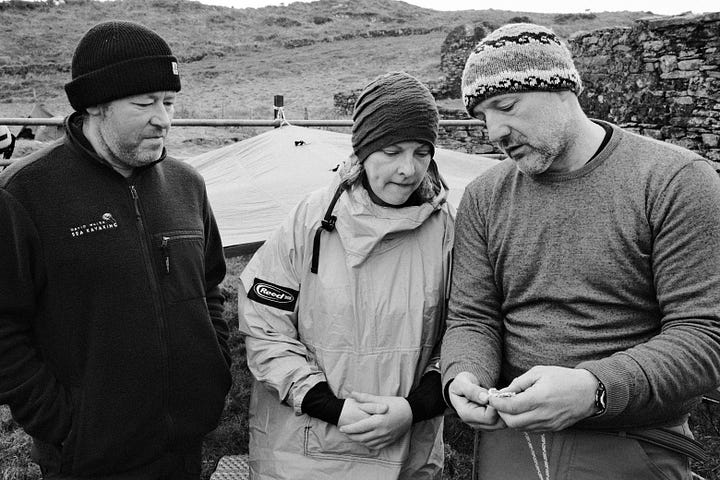

The course was a masterclass in the little details that mean the difference between thriving and merely surviving on a sea kayaking trip.
We learned “tarpology,” boat packing hacks, fire lighting, and how to forage the foreshore, where we found a scallop big enough for everyone to have a piece when we grilled it over the fire in chorizo grease from our “pot mess.”
Tarpology
I spent the first night wishing I had brought my 3x3m tarp while huddled in my bivvy in the slashing rain under a lean-to fashioned from a postage stamp ultralight “solo” tarp. A commando would call this “hard routine.” As an expedition skill, it was good practice to get by with less and field test gear I might not otherwise use.
The second night, the wind was forecast to swing around, blowing rain in opposite directions and making a one-sided lean-to less than ideal. I retreated to my tent for the night.
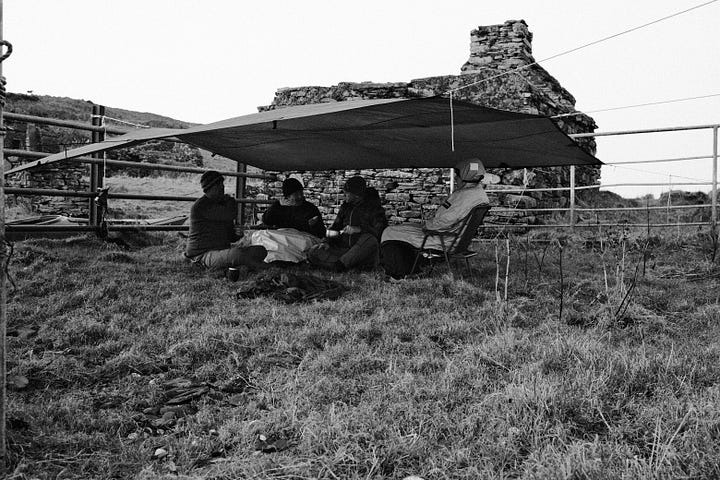
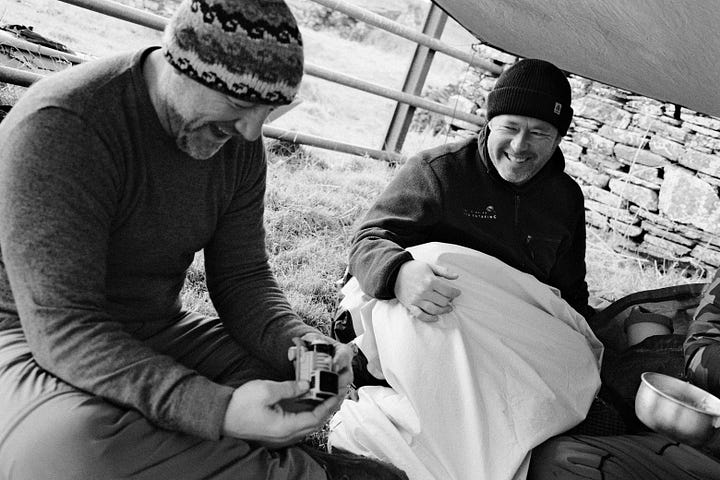
On the third night, David and I rigged his 4x4m tarp into a living-room-sized configuration in the lee of a ruined cowshed, making “hard routine” pretty easy. In the morning, there was enough room for everyone to have breakfast and change back into our dry suits under the tarp.
Lee demonstrated the basics of “tarpology” and showed us a few more setups, ranging from the simple A-frame to the origami-like tarp tent.
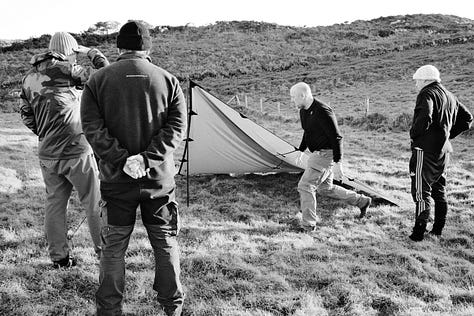
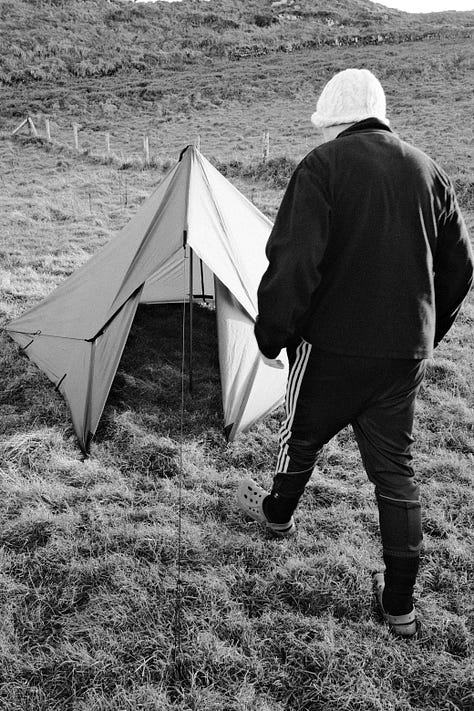
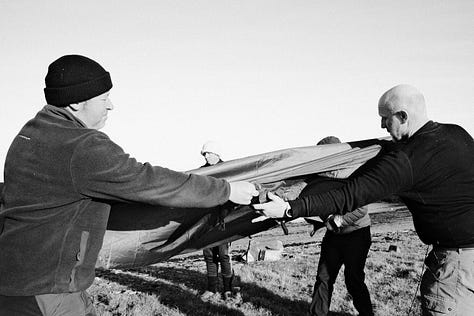
Like a lot of expedition fundementals, tarp-rigging calls upon lots of skills you might already have, like tying a bowline or a prusik hitch, and applying them in the field.
What do you need 500 wet wipes for?
“Hard routine” is a clarifying and simplifying experience. You quickly realize what’s essential, what’s nice to have, and what’s excessive. On this trip, I swapped out my camp pillow for my belay jacket in a stuff sack--making multiple uses of one piece of kit is a great way to save weight and space.
I upgraded my thermos flask and downgraded my camp stove from the feature-rich Windburner, which is great for boiling water and nothing else, to the MSR Pocket Rocket, which allows for actual cooking, expanding my menu beyond freeze-dried meals.
Reviewing each other’s gear was a reckoning. The jokes about bringing too many wet wipes for a 4-day course write themselves.
Tenacious Lee
If you think a course led by a Royal Marine Commando would be strict, severe, or over-serious, you must not know any Marines. There wasn’t a whiff of machismo or Bear Grylls bullshit. Besides the skills he was teaching, the main thing Lee’s background brought to the course was endless banter, hilarious sea stories, movie quotes, and Tenacious D lyrics.
We learned new vocabulary like “hot wets” (hot drinks) and “gash wet” (a poorly-made or lukewarm hot wet).
Lee’s “commando spirit” was contagious, and he had us laughing at ourselves and with each other as we got comfortable with discomfort. We came away with a bunch of inside jokes (the blind otter: if you know, you know) and stories you had to be there for.
These are expedition skills not on any syllabus.
A fatwood sacrifice
On the first night, Lee inspected my fire kit, which included a piece of store-bought fatwood on a string.
“Do you know how much money you’ve wasted on this stick? I can tell you because the price tag’s still on it ($4.50). I’ll show you how to forage fatwood, and you’ll never pay for it again.”
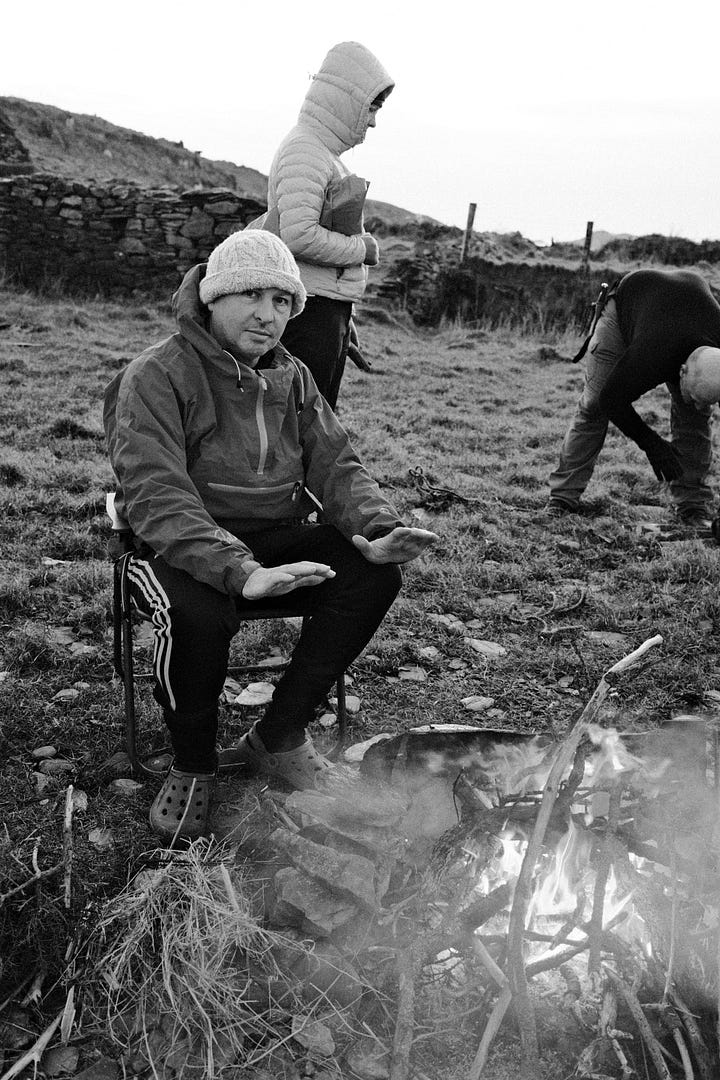
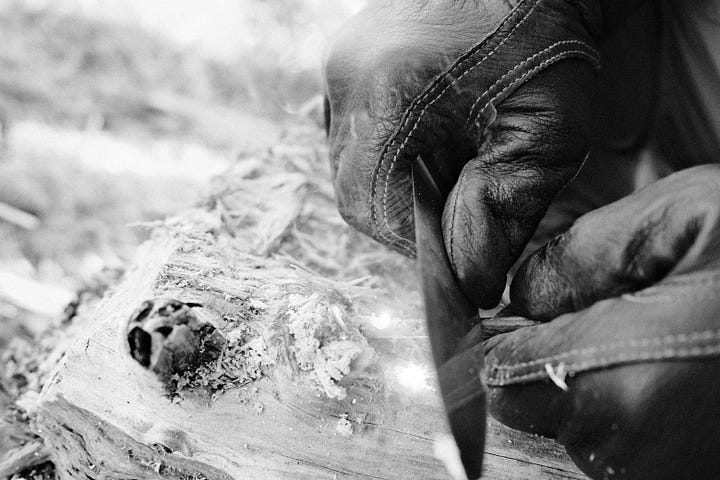
On the third night, we had a campfire on the beach with dead gorse and firewood we collected around the island. We got it going with shavings of foraged fatwood, a natural firelighter made of concentrated resin from a dead pine tree, struck with sparks from a ferro rod.
We practiced signaling by holding a bundle of green grass and ferns over the flames to generate puffs of black smoke at ten-second intervals.
Once the fire was roaring, I made a sacrifice to the gods of “hard routine.” While the others made chanting noises, I got on my knees, bowed my head, held up the store-bought fatwood with both hands, and committed it to the flames.
P.S. When I’m not having adventures, I’m helping other people write about theirs. If you or someone in your circle has an amazing story to tell, I'd love to hear it. I have some availability for new ghostwriting and editing projects.
— Charlie
Kokatat is the official gear sponsor of The Lap.
The lap will be fueled by Resilient Nutrition’s Long Range Fuel and bars.
CH Marine will be providing a VHF radio and other safety equipment.
Camp kit and cooking gas provided by Paddle & Pitch. Trolley by KCS. REAL Field Meals at a discount from Adventure.ie. Baselayers from GreatOutdoors.ie. Expedition coffee by 3fe.







Sounds wonderful, if that's your thing😆